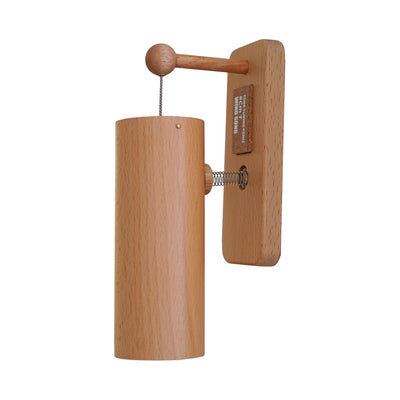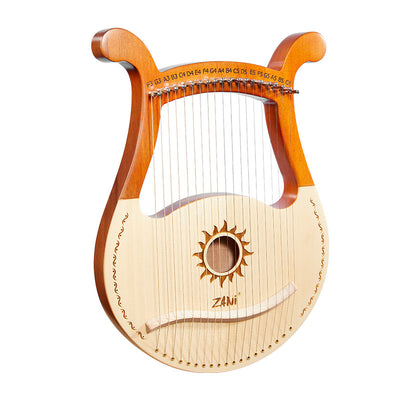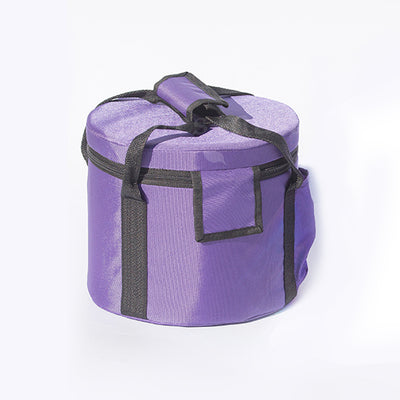Titanium Metal Singing Bowl Rainbow Yoga Meditation Healing
- Kostenfreier weltweiter Versand
- Vertrauensabzeichen
- Sichere Zahlungen
- Auf Lager
- Inventar auf dem Weg
Titanium Rainbow Singing Bowl, made of pure titanium. Ultra-lightweight, half the weight of a copper bowl of the same size and thickness. not painted, naturally colored at high temperature. so each one may be different.
Ultra-hard, with a hardness that is twice that of copper, and will not deform or crack
Excellent biocompatibility with human tissue, as is well known, artificial bone joints are made of titanium, making it more suitable for healing tools
Packing list:
1 * Bowl
1 * Mallet
1 * O-ring
1 * Soft case
1 * Cloth bag
Klangschalen kaufen: Tipps für die richtige Auswahl und besten Preise
Einführung in die Welt der Klangtherapie
Die Klangtherapie ist eine Form der alternativen Medizin, die auf den Einsatz von Klanginstrumenten wie Klangschalen und Gongs setzt. Klangschalen helfen dabei, die Gedanken zur Ruhe kommen zu lassen und die eigene Mitte zu finden. Klangschalen sind eine beliebte Wahl für die Klangtherapie, da sie eine Vielzahl von Klängen und Schwingungen erzeugen können. Sie sprechen Menschen jeden Alters und Erfahrungsstands an, auch Anfänger, die erste Erfahrungen mit Meditation oder Entspannung sammeln möchten. Die Klangtherapie kann zur Entspannung, zur Lösung von Blockaden und zur Förderung des Wohlbefindens eingesetzt werden. Dabei unterstützen die Schwingungen der Klangschalen, negative Energien zu transformieren und für eine positive, frische Energie im Raum und Körper zu sorgen. MO Klangschalen sind eine bekannte Marke im Bereich der Klangtherapie und bieten eine hohe Qualität und Wirksamkeit. Klangschalen eignen sich auch hervorragend als besonderes Geschenk oder als Teil eines individuellen Sets für dein persönliches Wohlbefinden. Es gibt verschiedene Arten von Klangschalen, die kunstvoll gestaltet oder schlicht gehalten sein können und sowohl in der Klangmassage als auch in der Therapie von erfahrenen Klangtherapeuten eingesetzt werden. Die Klangtherapie kann auch in Kombination mit anderen Therapieformen wie Yoga und Meditation eingesetzt werden.
Herkunft und Herstellung von Klanginstrumenten
Klangschalen stammen ursprünglich aus Asien, wo sie seit Jahrhunderten nach überlieferten Traditionen gefertigt und verwendet werden.
Die Herstellung von Klangschalen erfordert eine hohe Handwerkskunst, wobei erfahrene Handwerker die Schalen in aufwendiger Fertigung durch Schmieden aus verschiedenen Metallen herstellen. Die sorgfältige Auswahl des Materials und die spezielle Zusammensetzung der Metalllegierung sind entscheidend für das Klangverhalten und die Qualität der Schalen.
Die traditionelle Herstellung von Klangschalen erfolgt in Nepal und Indien, wo die Schalen von Hand geschmiedet und verarbeitet werden. Die Bewahrung dieser Traditionen und die besondere Zusammensetzung der Metalle sind maßgeblich für die Authentizität und den einzigartigen Klang.
Je nach Größe der Klangschale variiert die Frequenz und das Klangbild, was sich direkt auf die Anwendung und Wirkung auswirkt.
Für die optimale Nutzung und den Schutz der Klangschalen sind Zubehörteile wie Filz, Kissen und weiteres Zubehör wie Klöppel oder Fixierungsringe unerlässlich.
Die Vielfalt der Produkte und das besondere Gefühl beim Ausprobieren und Auswählen einer Klangschale machen jede Auswahl zu einem individuellen Erlebnis.
Vorteile der Klangschalentherapie
Die Klangschalentherapie bietet durch ihre besondere Schwingung und die authentischen Klänge eine Vielzahl von Vorteilen, wie z.B. positive Wirkungen auf Körper und Geist, tiefe Entspannung, Lösung von Blockaden und Förderung des Wohlbefindens.
Die Klangschalentherapie kann auch zur Förderung der Konzentration und zur Verbesserung des Gedächtnisses eingesetzt werden.
Klangschalen harmonisieren die Energie im Raum und im Körper, indem sie negative Energien verdrängen und für frische, positive Energie sorgen.
Die Klangschalen können auch zur Förderung der körperlichen und geistigen Gesundheit eingesetzt werden. In der Klangmassage und Therapie werden spezielle Therapie-Klangschalen von erfahrenen Klangtherapeuten gezielt eingesetzt, um durch Schwingungen Spannungen zu lösen und die Mitte der Menschen zu stärken.
Die Klangschalentherapie ist eine sanfte und nicht-invasive Methode, die keine Nebenwirkungen hat.
Die Klangschalentherapie kann auch in Kombination mit anderen Therapieformen wie Yoga und Meditation eingesetzt werden.
Klang und seine Wirkung
Der Klang einer Klangschale entfaltet eine besondere Wirkung auf Körper, Geist und Seele. Wenn eine Klangschale angeschlagen wird, breiten sich sanfte Schwingungen im Raum und im Körper aus. Diese Klänge können tiefgehende Entspannung fördern, das Bewusstsein erweitern und helfen, innere Blockaden zu lösen. Die verschiedenen Töne und Klänge sprechen unterschiedliche Bereiche des Körpers an und unterstützen so gezielt die Meditation oder die Anwendung in der Klangtherapie. Eine hochwertige Klangschale zeichnet sich durch reine, lang anhaltende Schwingungen aus, die eine intensive Wirkung auf das gesamte Wohlbefinden haben. So wird jede Klangschale zu einem wertvollen Begleiter auf dem Weg zu mehr Ruhe, Ausgeglichenheit und innerer Balance.
Einsatz in Wellness und Schulen
Klangschalen werden immer mehr in Wellness-Centern und Schulen eingesetzt, um die Entspannung und das Wohlbefinden zu fördern. Sie können an verschiedenen Orten wie Wellness-Centern, Schulen oder im eigenen Zuhause vielseitig verwendet werden.
Eine kompetente Beratung im Shop ist besonders wichtig, um die passenden Produkte und das richtige Zubehör für individuelle Bedürfnisse auszuwählen.
Es gibt verschiedene Kategorien und Sets von Klangschalen, wie tibetische, japanische oder Planetenklangschalen, die mit passendem Zubehör wie Kissen und Filz für eine optimale Nutzung ergänzt werden können.
Die richtige Größe der Klangschale sowie des Zubehörs wie Klöppel und Kissen beeinflusst maßgeblich den Klang und die Wirkung auf den Körper.
Die Klangschalen können auch zur Förderung der Konzentration und zur Verbesserung des Gedächtnisses eingesetzt werden.
Die Klangschalen bieten eine Vielzahl von Anwendungen, wie z.B. Klangmassagen, Klangmeditationen und Klangyoga.
Die Klangschalen können auch zur Förderung der körperlichen und geistigen Gesundheit eingesetzt werden.
Die Klangschalen sind ein wichtiger Bestandteil der Klangtherapie und bieten eine hohe Wirksamkeit und Qualität.
Klangschalen: Qualität und Besonderheiten
PMoon Klangschalen stehen für höchste Qualität und besondere Klangvielfalt. Sie werden aus einer speziell abgestimmten Legierung verschiedener Metalle gefertigt, was ihnen ihre charakteristische Klangqualität verleiht. Die Herstellung erfolgt in traditioneller Handarbeit, wobei jeder Schritt mit großer Sorgfalt ausgeführt wird, um optimale Klangergebnisse zu erzielen. MOON Klangschalen sind in unterschiedlichen Größen und Formen erhältlich, sodass sie vielseitig für Klangmassagen, Meditation oder in der Klangtherapie eingesetzt werden können. Die Kombination aus hochwertiger Legierung, präziser Handarbeit und jahrzehntelanger Erfahrung macht diese Klangschalen zu einer ausgezeichneten Wahl für alle, die Wert auf Qualität und besondere Klangerlebnisse legen.
Tipps für den Kauf einer Klangschale
-
Beim Kauf einer Klangschale sollte man auf die Qualität und den Klang achten. Eine persönliche Beratung im Shop hilft dabei, die passenden Produkte für die individuellen Bedürfnisse zu finden.
-
Es gibt spezielle Sets für Anfänger, die den Einstieg erleichtern, und Klangschalen eignen sich auch hervorragend als Geschenk mit besonderer Wirkung.
-
Das Gefühl beim Ausprobieren und Anschlagen der Klangschale ist ein wichtiger Faktor für die Kaufentscheidung.
-
Die Klangschale sollte aus hochwertigen Materialien wie Bronze und Zinn hergestellt sein.
-
Die Klangschale sollte eine lange Lebensdauer haben und leicht zu pflegen sein.
-
Die Klangschale sollte eine Vielzahl von Klängen und Schwingungen erzeugen können.
-
Die Klangschale sollte von einem erfahrenen Hersteller stammen, der eine hohe Qualität und Wirksamkeit bietet.
Preise und Qualität: Worauf Sie achten sollten
Beim Kauf einer Klangschale ist es wichtig, sowohl auf die Qualität als auch auf den Preis zu achten. Hochwertige Klangschalen sind oft etwas teurer, bieten dafür aber eine exzellente Klangqualität und eine lange Lebensdauer. Vergleichen Sie verschiedene Angebote und achten Sie auf die verwendeten Materialien sowie die Verarbeitung der Schale. Eine gute Klangschale überzeugt durch einen klaren, reinen Ton ohne störende Nebengeräusche. Prüfen Sie, ob die Schale aus hochwertigen Metallen gefertigt wurde und ob die Verarbeitung solide ist – das garantiert nicht nur einen schönen Klang, sondern auch Sicherheit und Langlebigkeit. So finden Sie die Klangschale, die Ihren Ansprüchen an Qualität und Preis am besten entspricht.
Fazit: Die richtige Klangschale finden
Die Auswahl der passenden Klangschale erfordert etwas Zeit und Aufmerksamkeit, lohnt sich aber für die eigene Entspannung und das Wohlbefinden. Überlegen Sie, welche Arten von Klangschalen für Ihre Anwendungen – ob Meditation, Klangtherapie oder zur Förderung von Ruhe – am besten geeignet sind. Vergleichen Sie die Qualität und die Preise verschiedener Modelle und achten Sie auf eine hochwertige Verarbeitung. Mit der richtigen Klangschale können Sie nicht nur tiefe Entspannung und innere Ruhe erleben, sondern auch Ihre spirituelle Entwicklung unterstützen. Lassen Sie sich bei der Wahl inspirieren und finden Sie die Klangschale, die zu Ihnen und Ihren Bedürfnissen passt.


































